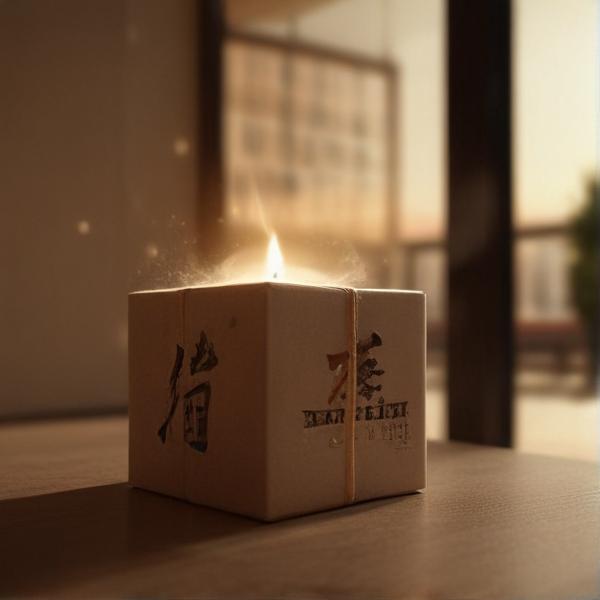基本信息 (Basic Information)
含义与用法 (Meanings & Usage)
中文核心释义 (Core Chinese Meaning): 盛放食物或物品的小型容器,通常有盖子。
英文核心释义 (Core English Meaning): Box, small container (usually with a lid) for holding food or items.
象形意义 / 为何这么写 (Pictographic Meaning / Writing Rationale)
文言文释义 (Classical Chinese Meaning)
与现代意义相近,主要指带盖的器皿。Similar to modern meaning, primarily refers to a container with a lid.
深入学习 (In-depth Study)
字源故事 (Origin Story)
字形演变 (Character Evolution)
常用词语和例句 (Common Words & Examples)
饭盒 (lunch box)
妈妈给我准备了一个饭盒带去学校。
Eng: Mom prepared a lunch box for me to take to school.
礼盒 (gift box)
新年时朋友送给我一个精美的礼盒。
Eng: A friend gave me a beautiful gift box during the New Year.
相关成语 (Related Idioms)
相关成语信息待补充。Related idiom information pending.
多语言翻译 (核心释义) (Translations (Core Meaning))
- French: boîte
- German: Schachtel
- Spanish: caja
- Italian: scatola
- Portuguese: caixa
- Russian: коробка
- Arabic: صندوق صغير
- Persian: جعبه
- Dutch: doos
- Polish: pudełko
- Vietnamese: hộp
- Ukrainian: коробка
视频学习资源 (Video Learning Resources)
通过以下链接在热门视频网站搜索 "盒" 的更多讲解:
Search for more explanations of "盒" on popular video sites:
- 在 Bilibili.com 搜索 "盒 字源 说文解字" (Search on Bilibili)
- 在 YouTube.com 搜索 "hé character origin etymology" (Search on YouTube)
网络参考 (Web References for "盒") ()
网络内容摘要 (Web Content Summary):
```html“盒”的核心含义是指用来装东西的小箱子或容器,常见于日常生活中,如食品盒、礼品盒等。 "盒" primarily means a small box or container used to hold items, commonly seen in daily life, e.g., food box, gift box.
从字形起源来看,“盒”字由“合”(合并、合拢之意)和“皿”(器皿)的结构组成,象征着把东西合在器皿内,即“盒”的本意。 The character "盒" is composed of "合" (meaning to combine or assemble) and "皿" (vessel/container), symbolizing combining things into a vessel, which is the original meaning of "盒".
- 常见用法: 盒饭(boxed meal),盒子(box),礼盒(gift box)。 Common usages: 盒饭 (boxed meal), 盒子 (box), 礼盒 (gift box).
- 易混淆点: “盒”易与“合”(意思为合并、聚合)、“河”(river)混淆。部分初学者会在写法和发音上弄错。 Common confusion: "盒" is sometimes confused with "合" (to combine) and "河" (river) due to similar pronunciation or writing among learners.
- 成语/固定搭配: 虽“盒”字不常见于成语,但日常组合常出现,如“月饼盒”、“珠宝盒”。 Set expressions: "盒" is not common in idioms, but frequently appears in daily collocations such as "moon cake box", "jewelry box".
信息说明:可供参考的内容主要涵盖“盒”字的字形演变和最基本含义,未见丰富的文化典故或成语。字形演变可查甲骨文、金文、篆书等。 Information note: Available data mainly covers the evolution and basic meaning of "盒", with little on cultural background or idioms. The character's evolution can be traced in oracle bone, bronze inscriptions, and seal script.
```汉字"盒"的起源与演变(源流)-汉字字源网
汉字字源网收录2975个汉字的源流词条,基本涵盖了常用汉字的字源分析,是学习和研究汉字的必备工具。
盒 字源 字形演变 甲骨文 金文 说文小篆 - 百答知识
百答知识-是一款免费的字词学习软件。本页面为您讲解汉字"盒"从古到今的字形演变过程,以及汉字"盒"甲骨文 、金文、说文小篆、六书通的各个时代不同的写法。
更多图片 (盒 More Images) ()
